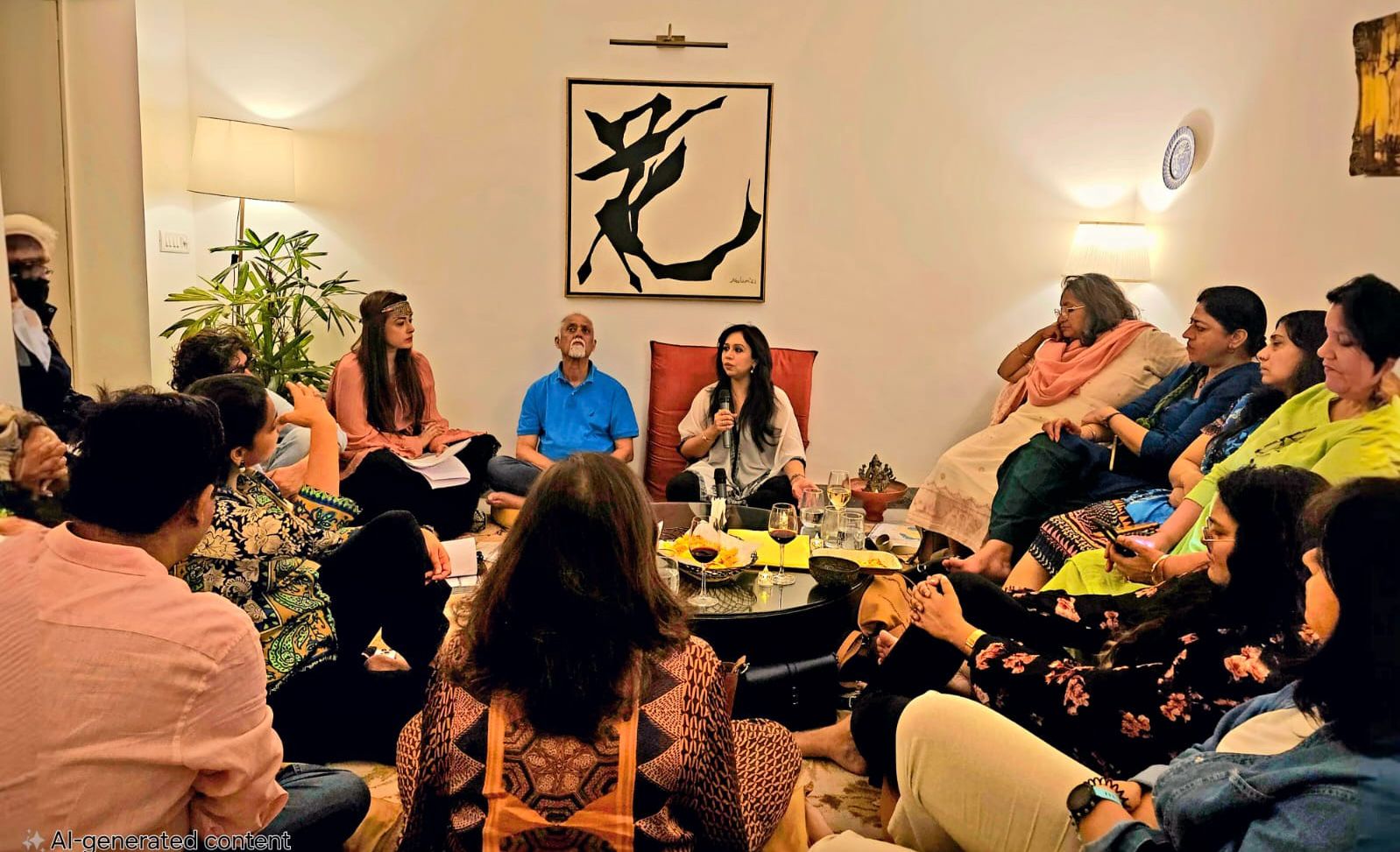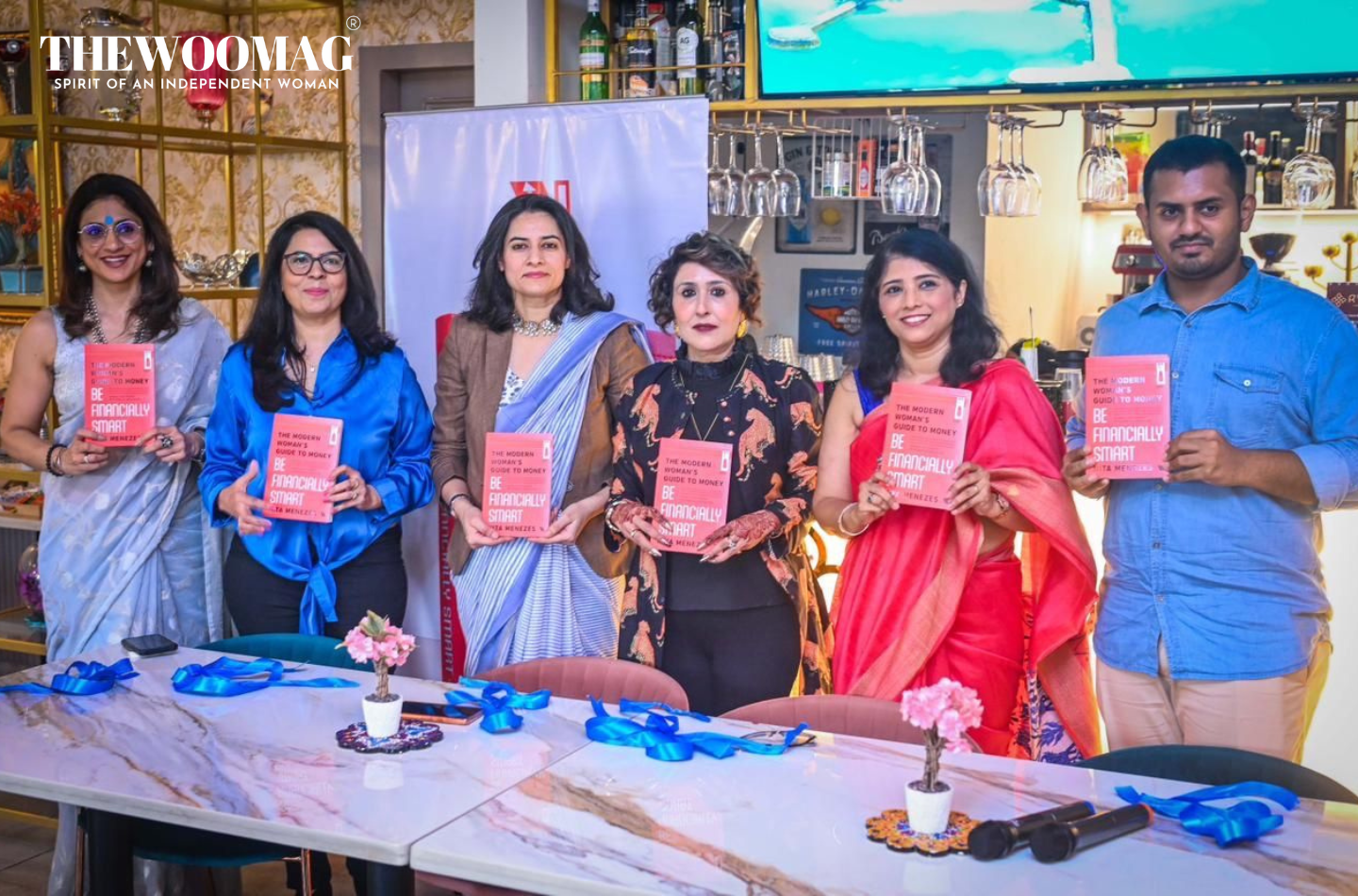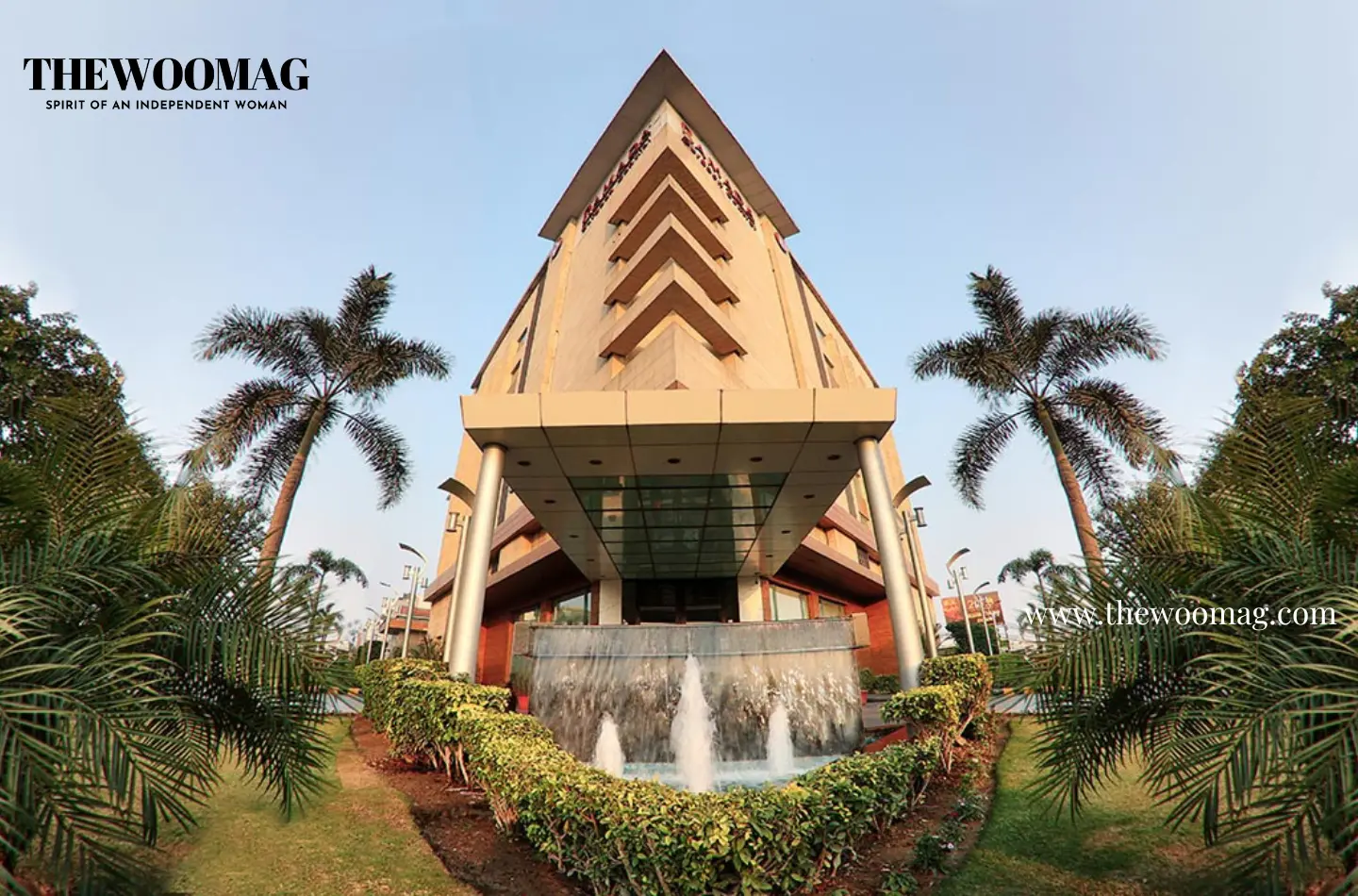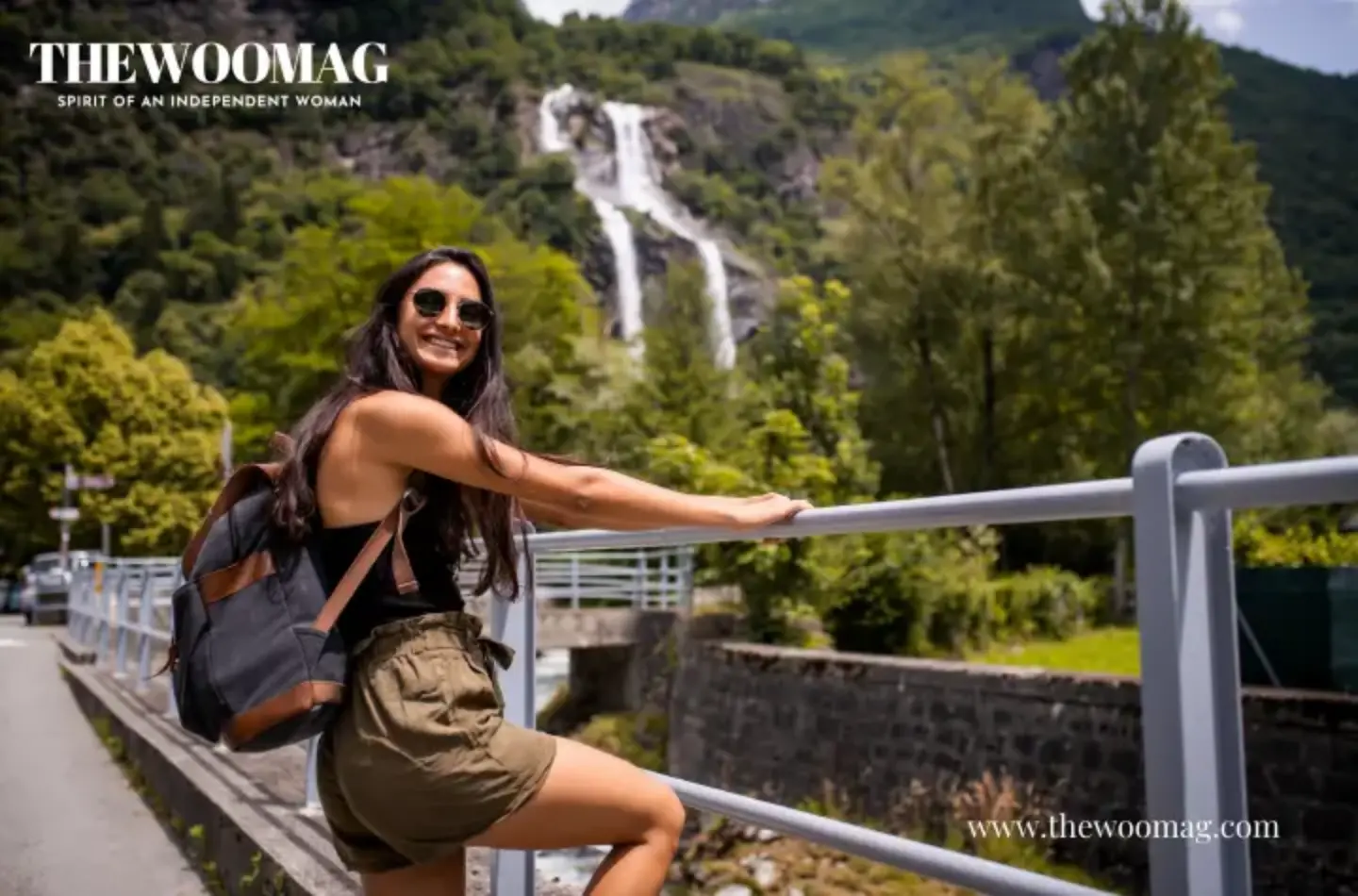Culture , Lifestyle
JAPAN Travelogue - A Bravura Getaway To The Oriental Land Of The Rising Sun
![cover-Japan_Travelogue[1].png](https://www.thewoomag.com/backend/images/blogs/cover-Japan_Travelogue[1].png)
There are so many amazing things to do in the Land of the rising sun, but so little time to accomplish them in the 2 weeks jaunt.
The land of the Rising Sun Japan, interestingly is often called as the land of Cherry Blossoms too. As, for centuries Sakura-no-hana (Cherry Blossom) has been the favourite flower of the Japanese.
Japan comprises of 72% mountains which are heavily forested & the rest is land. Growing up with the tragic history of this country, I have wanted to visit ever since well since forever. Since childhood Ikebana, Origami and Bonsai were my favourite sport, thus Japan has been my latent aspiration. But this secret desire saw the light of the day with the persistence of Meku, who lives with her family in Japan. She is the kid Sis of my close friend Jayanti, who I miss even today after10 long years. Meku's warmth made the trip to this Oriental paradise, a reality and an unforgettable experience.
This land has always been linked with the word 'pricey' as portrayed by my relatives and friends who have had a taste of this Orient. I'm a planner, therefore the concept of go with the flow mantra never sat well with me. So the pleasure of putting things together was thrilling. With an extensive plan in mind research was the need of the hour. Now given to understand that Japan would burn a sizable hole, a JR Pass was a must for the bullet train or Shinkansen experience. This Japan rail pass also took care of our train travel in all the JR lines within the country. So what appeared initially as a protracted activity more so like getting ready for an expedition, transmuted to an experience of a lifetime!
Japan is linked with high technologies, samurai swords, Oriental cherry blossoms-Sakura and their popular food Sushi.
But the country in reality had lots more to offer. The combination of ancient traditions of the East and hi-tech western progress pleasantly surprised us leaving us with a feeling of awe as we plunged into the atmosphere of Japanese ethnicity.
It was June 12, 2016 and after an 8 1/2 hrs of flight we were ultimately descending at Tokyo's Narita International airport. After collecting our bags from the conveyor zone as my husband Kunal and I make our way towards the exit, a sudden adrenaline rush as we spot the beaming faces. Yes it was Meku along with her husband Vishwa and daughter Diya eagerly waiting to welcome us to this historical land. Before we knew we were being whisked off and in no time we were speeding on Japan's National highway, all of a sudden we found Vishwa pointing to an entrance and we found ourselves speeding through an under-water tunnel - The Tokyo Bay Aqua-line. This reminded me of my experience way back in 1994 when we travelled through Lincoln Tunnel under the Hudson river in New York which was 1.9 miles long. Vishwa explained unlike most other tunnels, this one is a bridge tunnel combination across the Tokyo Bay. With a flash of an eye we seem to have traversed 9.6 km under the Bay then the rest was a 4.4 km drive over the bridge. We were told this amazing motorway was the fourth-longest underwater tunnel in the world.
Passing through the city of Tokyo we reached their apartment in Kawasaki. We could feel the excitement on the rise as we stepped out into the verandah of their 33rd floor Apt. It was like an apparition out of the movies, Kawasaki by Night, completely stupefying amidst thousands of dazzling city lights we spotted the Tokyo Tower at a distance. A treat to the Eyes indeed!
Kawasaki as seen from the 33rd Floor of Meku's Apt.
Next day with Meku as our guide we went on a tour of Kawasaki neighborhood. We began with a trip to Lazona Plaza, a huge and stylish 5-storied shopping Mall which joined Kawasaki station on one side, along with Meku's Apartment on the other.
The stylish Lazona Plaza
The fish market and the fruit & veggies pleasantly surprised us with their humungous size.
Today we had our first taste of Japanese Bento Box (single portions take out.) A traditional Bento box holds sticky rice, fish or meat & a vegetable. Bento was quite a yummy treat.
A Bento Box
Next day once again Meku takes the lead. After a short train ride we find ourselves in Kamakura a town with oodles of history. I gathered that it holds the accolade of having once being the seat of the capital from 1185 until 1333. Our first halt was at Kotoku-in Temple; home to one of Japan's most distinctive sights, the giant Amida Buddha (amit bha in Sanskrit). The statue stood at 13.5 meters tall, cast from bronze and weighing around 120 tons. Moreover I found out that this colossal statuette was originally housed in a building with a roof, until a tsunami destroyed the building in 1495, leaving the statue standing defiantly in the open air ever since. Standing underneath this giant sculpture I felt like a Lilliput out of Gulliver's Travel.
From here we took a short stroll down the road to an immaculate garden going all the way to the top of a hill, this was the Hase- Dera Shrine, a cultural delight . our first indulgence into Japanese culture.
This temple with its stunning hydrangea, floating Iris, shimmering koi fishponds, tiny waterfalls and ominous underground caves was a package full of enchantment.
Before setting our eyes on the main Kannon Buddha, we saw a similarly impressive but smaller three-meter, golden statue of Amida Buddha in Amida-do Hall. On entering the dimly lit main Kannon-do Hall we were spell bound, as what stood before us was a 11 headed gold statue of Buddha with a height of 9.18 metres (30.1 ft), this statue represented Buddha's different phase in the search for enlightenment. We were told that this statue is made from camphor wood and gilded in gold. In this Hall photographs were strictly prohibited. But we were surely awestruck by its grandeur.
Upon further climbing the stairs there was a small space midway up with hundreds of small statues of jizo (little Man) and other assorted figurines.
It was June, so lady luck was on our side as it was the blooming season and Hydrangea festival was in full swing. Hase dera temple ground held an air of mystified charm with 40 varieties of gorgeous hydrangea adorning the walk up the hills and on top of the hill what greeted us was a marvelous view of the Sagami Bay, Yokohama.
From here the last in our Kamakura itinerary was the funa Kannon Temple, a Buddhist temple in Kamakura. The outstanding feature of the temple is 25 metres (82 ft), 1900-ton reinforced concrete statue of the bodhisattva Kannon.
As these Shrines required a lot of walking and climbing, we were now quite at the brink and decided on a much deserved Sushi break. Incidentally Japanese Sushi has been my all time favourite even in my country. So with a bit of fuelling we got ourselves ready for our next stop- Yokohama - the 2nd largest city of Japan & capital of Kanagawa prefecture. Yokohama- a small fishing village, during the Edo period grew into a Port open to foreign trade in 1859.
Yokohama the Port City
We hailed a Taxi after coming out of the Yokohama station, as we felt our feet giving the rightful signals. The Hi-tech Taxi ride in Yokohama was simply mind blowing. As the automatic door opens we were greeted by a beaming cab driver, greeting us saying - Konnichiwa (hello). The spic and span interiors along with sparkling white dainty lace seat covers was enough to sweep me off my feet.
I sure was in a reverie as I soaked into this stunning city but with a jolt bounced back to reality as our Taxi comes to a halt. Ah yes we were at the entrance of the world's largest China town. After a stroll through the cobbled streets of this colourful settlement we decided to go in for some refreshing Chinese Tea & snacks.
By late evening we were back in Kawasaki. What a splendid start to our Japanese jaunt! The following day at the break of dawn, we were all set with our back packs, as we were flying out to the northern Island of Japan, Hokkaido. Meku still a wee bit skeptical wasn't going to take chances with a couple of greenhorn. So duly escorted we reached Shinagawa station where she put us onto the next train bound for Narita Airport. As the train speeds ahead I felt like baby's day out! The fact that we were all by ourselves in an alien land with just a few Japanese words to get us through was initially a wee bit intimidating.
The sight of Hokkaido's gridded landscape slowly visible as our aircraft hovers low and makes a beeline for New Chitose Airport. On disembarking we headed for the railway platform & boarded the train to Sapporo station. After the basic check-in formalities we decided on some local sight-seeing.
Sapporo being the capital of Hokkaido and Japan's fifth largest city interestingly is also the nation's youngest major cities. An amazing fact revealed was that in 1857, the city's population stood at just seven people. Sapporo became world famous in 1972 when the Olympic Winter Games were held there. We were told Skiing and annual Snow festivals featuring enormous ice sculptures are a major attraction of Hokkaido. Today, the city is well known for its ramen, beer, and the annual snow festival held in February.
We began our Sapporo tour by first visiting the old Hokkaido government office built in 1888. This building is known to Sapporo residents as Red Bricks or akarenga. We noticed it had an octagonal dome on the top. We were told that when completed, it was one of the largest and tallest buildings in Japan and symbolized the prestige and importance of the then Meiji Government who played a key role in the development of Hokkaido.
Hokkaido Old government Office
From here we proceeded to see the Sapporo Clock Tower, a wooden structure known as the symbol of the city. The clock after which it was named continues to run and keep time, and the chimes can be heard every hour. The Clock Tower was said to have been built in 1878 and is regarded as both a historical and cultural symbol of Sapporo.
Now our appreciably tired legs prompted us to trace our way back to the hotel. Next day with an early start, we first headed towards Sapporo Beer Factory, which to our dismay turned out to be an ethnic shopping mall built over the former main brewery for Sapporo Beer. As we went in, we found that most of the original brick buildings from the brewery preserved giving it a period look, the interiors converted into shops, restaurants serving freshly brewed Beer, museums, galleries, and conference halls.
Now I was aware that as this was the month of June, we were surely missing the Annual Snow festival of Hokkaido held in the month of February with the marvelous ice Sculptures, that being said, lady luck hadn't completely deserted us. As we suddenly found out that today, June 16, 2016, was the final day of the annual Hokkaido Shrine Festival. So as we step out into the street, lo and behold; there it was a dazzling parade! More than thousand people in colourful Heian period costume were on the road. They were parading around the city with 4 portable Mikoshi shrines and 8 floats.
After our eyes had marvelous feast, we made our way to Sapporo Beer Museum the only beer museum in Japan which we were told had opened in July of 1987 to provide visitors with a varied knowledge of beer and brewing. As we went into the building which now houses Sapporo beer Museum was constructed in 1890 as the factory of the Sapporo Sugar Company. It said it was one of the precious cultural legacies of the Meiji Era. We also found that the Sapporo Beer Museum had been selected to receive the official "Hokkaido Heritage" designation.
After a quick short stroll in the adjoining Beer garden followed by light snacks at the former Brewery now a convert into Genghis Khan Restaurant we proceeded to our next destination.
As we were running against time we quickly hailed a Taxi, on reaching Sapporo station we boarded a train to Shinrin Koen Station Nippono, from here once again took a 10 min. Taxi ride to Napporo Shinrin Park -The Historical Village of HOKKAIDO (Kaitaku-nu-Mura). A time warp into Hokkaido's history, 100 + years ago in the Meiji & Taisho period (1800 to early 1900), depicting the pioneering era of Hokkaido. Amidst a light drizzle we made our way into this stunningly beautiful re-constructed historical village of Hokkaido, through the old Sapporo station building. Upon entering the village, there was an atmosphere typical of the frontier period of Hokkaido. Standing before us was a horse-drawn trolley with a track providing transportation along the main street, which was lined with old wooden and stone buildings.
This was an open air Museum constructed in Natural surroundings amidst dense forest and mountainous terrain covering 54 hectares. As we went around we saw that the Village showcased 52- 60 odd buildings restored from demolition from various parts of Hokkaido & relocated both in Japanese & western Architecture depicting Fishing, Farming, Mountain & Town areas of those days built by immigrants from Honshu.
After an overwhelming day, we returned back to our Hotel as it was time to bid adieu to Hokkaido and go back to the main Island Honshu.
Walking up the mountain dense forest path under a light drizzle
Next day boarding the early morning flight we reached Tokyo's Narita Airport from here Narita Express took us to Tokyo station. As usual Meku was waiting for us.
Together we bounce off on a mini tour of the capital of the country. Tokyo the world's largest Metropolises started out as a Fishing Village, known as 'Edo' or Estuary was a fact hard to digest. But a true story indeed. It was first fortified in the 12th Century & became home to Edo Castle.
The current Imperial Palace (Kkyo) is located on the former site of Edo Castle, a large park area surrounded by moats and massive stone walls in the center of Tokyo, it was a short walk from Tokyo Station. Currently it is the residence of Japan's Imperial Family. Edo Castle once used to be the seat of the Tokugawa shogun who ruled Japan from 1603 until 1867.
From here we went to the Ginza district of Tokyo. We decided to explore Ginza, one of Tokyo's swankiest and most posh districts. The Ginza is the most famous up market shopping, dining and entertainment district, featuring numerous department stores, boutiques, art galleries, restaurants, night clubs and cafes. Also they say it is one of the best places to see the neon lights of Tokyo. After the department stores close and the shoppers go home, the area took on a second life as an entertainment and theatre district.
Ginza Wako building is the symbol of the Ginza, standing at the northwest corner of the district's centrally located Ginza 4-Chome junction of Chuo and Harumi Dori. Incidentally the Wako building built in 1932 is the clock tower.
After some souvenir shopping, we decided to rest our extremely tired calf with some Tea and Pastries @ Ginza's popular Tip Top , an Australasian Bakery.
From here we made it to Tokyo's famous Electronics district Akihabara, also called Akiba after a former local shrine . We gazed at some amazing electronics & bought some stuff too and then completely satiated returned back to Kawasaki. We had already traversed a long way, as tomorrow we realized was June 18, 2016 & a weekend. So it was time to change shifts as they say J Vishwa was our new pilot. He had plans for us. He was driving us to Fuji Safari, located at an altitude of 850 meters at the foot of Mt. Fuji's first station.
With an early start we were speeding through beautiful country side all the while peering out to get a glimpse of the majestic Japanese Mountain Mt. Fuji. As we reach the first station of Mt. Fuji traversing through a spectacular hilly terrain we arrive at the much awaited Fuji Safari. Once inside the park we had close encounter with animals roaming all around, often around our cars, a bit scary at times.
Last attraction but definitely not the least were the newest Stars of Fuji Three Lion Cubs, they were simply adorable. We are allowed to hold these cuties. They simply stole the show. Indeed it was an experience of a lifetime! Not to mention the breathtaking view all around the Park.
We caught a glimpse of Mount Fuji on the way (though clouded most of the time as June is a rainy season in Japan).
Next day was Sunday, so once again we were to follow the leader - Vishwa. Today's trip was wonders of Tokyo. We decided to begin our day with a visit to Miraiken. A Museum on emerging Science & innovation boarding the Driverless train.
We were told that the line is named after the black-headed seagull (yurikamome in Japanese).The Yurikamome is Tokyo's first fully automated transit system, controlled entirely by computers with no drivers on board. As we took the driver's seat the driverless elevated train crossed the Rainbow Bridge with a 270-degree loop. We got some great views of Tokyo bay and an excellent view of the island as a whole as we rode on an attraction in itself.
Now it was time for lunch, so off we went to Heiroku Sushi. A Sushi Bar located on Omotesando street. The shushi's went around on a very comfortable Conveyor Belt Ride. Here we ate Sushi to our hearts content. Loads of variety. We had to choose from the conveyor belt. Then stack up the plates to pay the bill J Quite a memorable experience, to take back home.
As we were in Tokyo's Omote-sando where the stylish shops such as boutiques and luxury brand shops gather. At the center of this Omote-sando, is a souvenir shop called Oriental Bazaar. Meku told us that this was a quick way to shop around for Japanese souvenirs sprawled over three floors. So right after an awesome lunch, we sauntered off to this Bazaar which seemed to an absolute tourist paradise. One can describe it as a one-stop outlet.
Japan surrounds you. Every moment of every day was filled with new discoveries and cultural difference and utter delights If there were a word to describe Japan as a whole, it would be reverent. This is a nation where every action displays a culture of deference, respect and obedience. It encompasses daily life. Not to forget the Technology this takes Japan ahead of all. With this I come to the end of our first week in the land of the Rising Sun.
To be continued
RELATED ARTICLES


.jpg)


.png)














![cover-New_Year_Resolutions_for_Women_Who_Want_to_Be_Happy[1].png](https://www.thewoomag.com/backend/images/blogs/cover-New_Year_Resolutions_for_Women_Who_Want_to_Be_Happy[1].png)
![cover-81_-_7_Proven_Interview_Tips_for_Professional_Women[1].webp](https://www.thewoomag.com/backend/images/blogs/cover-81_-_7_Proven_Interview_Tips_for_Professional_Women[1].webp)
I-221, 4th Floor, Hilton Drive Avenue, Sec-50, Gurgaon, 122018, Haryana
info@thewoomag.com
+91-8586970572